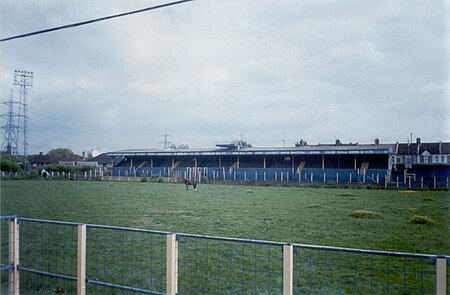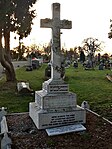Plough Lane (1912–1998)

Plough Lane was a football stadium in Wimbledon, south west London. For nearly eighty years it was the home ground of Wimbledon Football Club, from September 1912 until May 1991, when the club moved their first team home matches to Selhurst Park as part of a groundshare agreement with Crystal Palace. Both clubs' reserve teams then used Plough Lane as their home ground until 1998, when the site was sold to Safeway, who intended to redevelop the site as a supermarket. Whilst site redevelopment plans were negotiated, the stadium remained derelict for several years until it was finally demolished in 2002. When permission for a supermarket was ultimately refused by the local authority, Safeway sold the site and it was eventually developed as a private housing development known as Reynolds Gate, named after former Wimbledon F.C. striker Eddie Reynolds, which was completed in 2008. Plans to build a new stadium for AFC Wimbledon on the nearby site of the Wimbledon Greyhound track, situated approximately 200 yards (183 metres) from the original Plough Lane stadium, were approved by Merton Council in December 2015. Construction on the 'New Plough Lane' began in 2018, and it opened on 3 November 2020.
Excerpt from the Wikipedia article Plough Lane (1912–1998) (License: CC BY-SA 3.0, Authors, Images).Plough Lane (1912–1998)
Durnsford Road, London Wimbledon Park (London Borough of Merton)
Geographical coordinates (GPS) Address Nearby Places Show on map
Geographical coordinates (GPS)
| Latitude | Longitude |
|---|---|
| N 51.428472222222 ° | E -0.18966666666667 ° |
Address
Durnsford Road 3
SW19 8HJ London, Wimbledon Park (London Borough of Merton)
England, United Kingdom
Open on Google Maps









